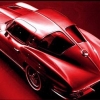-
Posts
54 -
Joined
-
Last visited
Reputation Activity
-
 Kaidesa got a reaction from kaliwete in Audio interface. Confusion galore. Help?
Kaidesa got a reaction from kaliwete in Audio interface. Confusion galore. Help?
I ended up getting both and testing them both out with intentions of returning one. Oddly enough, the Behringer won. For the vast price difference between the two, the Behringer was a lot easier to set up, seems to have a MUCH lower latency than the Focusrite at the same sample sizes, and it sounded nearly identical for voice, with a slight edge given tot he Behringer for musical instruments.
Overall, I'm happy that I could spend a lot less money for a device with a lot more features and slightly better quality. Looks like Behringer got a huge boost now that they snatched Midas.
-
 Kaidesa reacted to ThomasD in Best Mic for Voice Work?
Kaidesa reacted to ThomasD in Best Mic for Voice Work?
People always want 'the best' but often fail to grasp the actual application matters.
The best plane for aerobatics is going to be inherently unstable and all but refuse to fly straight and level. It makes a lousy choice for a small business commuter. But darn if it ain't the best.
Consenser mics are a lot like this. If my primary goal is conveying words more than sounds I'd rather have a relatively inexpensive dynamic cardioid or maybe even a shotgun and 'suffer' with the less than perfect audio reproduction. My voice might not sound quite so rich, but it also will not be lost or disrupted by extraneous noise or poor level control.
Plus if I drop it there will be no tears shed.
-
 Kaidesa got a reaction from rhyseyness in Dynamic Audio Output Switching
Kaidesa got a reaction from rhyseyness in Dynamic Audio Output Switching
Honestly, I doubt this is possible. The video and audio systems on a computer are typically completely separate. They know nothing about each other, so there's no way to swap the audio of a single application depending on where it's located on the physical displays.
-
 Kaidesa got a reaction from Schyken in Dynamic Audio Output Switching
Kaidesa got a reaction from Schyken in Dynamic Audio Output Switching
Honestly, I doubt this is possible. The video and audio systems on a computer are typically completely separate. They know nothing about each other, so there's no way to swap the audio of a single application depending on where it's located on the physical displays.
-
 Kaidesa got a reaction from DarkBlade2117 in $60 or Less Budget Mic
Kaidesa got a reaction from DarkBlade2117 in $60 or Less Budget Mic
HUGE WALL OF TEXT INCOMING.
That's actually a very good question. Phantom power is basically just power added by an external power supply to the microphone in question. Phantom power is typically only required for XLR condenser-style microphones, such as the BM-700, BM-800, NW-700, NW-800, AT2020 and just about any other condenser microphone that doesn't have one built-in. What it does is provide 48v power to the microphone itself, allowing it to run at proper volumes, and in some cases, allowing it to be used at all.
Phantom power is not ALWAYS a requirement but is HIGHLY RECOMMENDED if you're using an XLR condenser microphone. Most of them on the high end REQUIRE one, so if you're getting an XLR microphone, ever, just go ahead and buy a small power supply to go along with it.
Picture it as an amplifier for headphones. Some headphones just need more power to be used to their full potential, or to even be heard at all. Phantom power is that, but for an XLR microphone.
FOR MY RECOMMENDATION OF THE NW-800.
If you're going based strictly off of my recommendation with the Neewer NW-800 or going with either the NW-700, BM-700 or BM-800, I found that adding five volts through a USB sound card was good enough to drive the microphone. Not all USB sound cards can do this, but THIS SPECIFIC ONE seems to do it wonderfully. I've tested the volts added on five of these little suckers, and they all seem to hit that mark.
Keep in mind, THIS IS ALL YOU REALLY NEED FOR THIS SPECIFIC MICROPHONE unless there's some major reason you want to increase the output quality even further.
https://www.amazon.com/Sabrent-External-Sound-Box-USB-SBCV/dp/B002R33VWW
A nice little additive to the card is that it allows you to mute the microphone itself since the NW-800 lacks that functionality itself. However, the volume still needs to be quite high for the volume to be decent enough. In that video, using a USB soundcard which provides 5v of power, the microphone needs to sit at about 70% of input volume.
WHY YOU SHOULD BE USING PHANTOM POWER.
With true phantom power, you can lower your volume in the operating system of choice in order to get the same AUDIBLE volume from the microphone, and pick up much less noise in the process. Buying a proper phantom power supply, such as in the link below, will allow you to upgrade your microphone in the future without having to buy anything extra at that point, and will remove the need for the small USB sound card altogether.
http://www.amazon.com/Weymic%C2%AE-Condenser-Microphone-Recording-Equipment/dp/B015A6G8EA
If using the NW-800, you will also need to buy a proper XLR to XLR cable, as they only come with an XLR to 3.5mm audio cable. You can then use the cable that came with the microphone to connect it to the computer from the output end of the phantom power supply.
WANT SOMETHING BETTER?
You can always buy a proper audio interface as well, which also provide phantom power, and some added stuff such as gain control and, in some cases, mixing capabilities. But that's typically only useful if you plan on doing some super advanced things with the microphone, like doing professional quality podcasts, recording music, or if you become YouTube/Twitch famous and can afford to throw money at things. I'm nowhere near that point, but I still use one, personally. The one below is one that seems to be a common recommendation and one that I use personally just for the sake of future-proofing my audio setup a bit.
http://www.amazon.com/Focusrite-2i2-USB-Recording-Interface/dp/B005OZE9SA
SO, TO RECAP, FOR ANY XLR MICROPHONE IN GENERAL:
If you use a very small condenser microphone, you MAY be able to get away with using a USB sound card to power the microphone. NOT ALL USB SOUND CARDS CAN BE USED. NOT ALL MICROPHONES WILL BE ABLE TO BE POWERED BY ANYTHING OTHER THAN PROPER PHANTOM POWER. If trying this, and the microphone has static or high-pitched hissing in the background, records at super low levels, or can't be heard at all, you need phantom power.
Phantom power is a requirement for most XLR microphones. Save yourself the trouble and purchase a phantom power supply if you plan on using one, as it'll likely give you the best experience for ANY XLR microphone, regardless of what could potentially power it.
If you're wanting to record music, do high-quality audio podcasts, or get the absolute best sound quality from any XLR studio condenser microphone in the future, you will need to buy a proper audio interface in order to hit your requirements. This isn't recommended for everybody, for obvious reasons. If you have the money, then sure, get a proper audio interface. If not, a simple phantom power supply will do you a world of wonders.
-
 Kaidesa got a reaction from DarkBlade2117 in $60 or Less Budget Mic
Kaidesa got a reaction from DarkBlade2117 in $60 or Less Budget Mic
@DarkBlade2117
Sorry, completely missed this. Also, updated the list because I failed to include the XLR male to XLR female cable that will be required if you go with a phantom power supply.
As for the difference between the BM-800 and NW-800, from the limited experience I have in thoroughly testing both, they seem pretty much on par. The BM-800 has a looser grill over the mic and has a glossy finish while the NW-800 has a tighter grill over the mic and has a matte finish. The NW-800 has 4kHz less of a higher frequency response, but it really doesn't make that huge of a difference in how the two sound. To my ears, they're INCREDIBLY similar, but the NW-800 seems cleaner than the BM-800.
The only major difference is that the BM-800 seems to pick up a bit more bass even on the high end, which may or may not be preferable to you or your audience.
I'm not the only one who shares this opinion, either. Video below.
-
 Kaidesa got a reaction from DarkBlade2117 in $60 or Less Budget Mic
Kaidesa got a reaction from DarkBlade2117 in $60 or Less Budget Mic
@DarkBlade2117
Also, this is a great little setup for starting out on Twitch and YouTube. It's inexpensive, and compared to what a lot of people suggest, you save a lot of money and still get clear audio. I use the AT2020 for when I'm home, which gives a bit of an improvement, but it's quite unnecessary for starting out.
To be honest, I doubt the typical viewer of a stream or YouTube video would be able to tell what microphone you're using anyway, so "cheaping out" is kind of a moot point. What matters is, it's cheap, it sounds quite clear, and it gets the job done surprisingly well for being a budget setup.
-
 Kaidesa got a reaction from DarkBlade2117 in $60 or Less Budget Mic
Kaidesa got a reaction from DarkBlade2117 in $60 or Less Budget Mic
Around $60, probably, but that's about right.
What I purchased for my NW-800 setup is the following:
Neewer Mic Boom Suspension Arm
https://www.amazon.com/gp/product/B00DY1F2CS/
(Note: This seems a bit flimsy, and is known not to be able to hold heavier microphones. It works great for the NW-800 and the AT2020, though. If you're looking to upgrade, I'd recommend going straight to a RODE arm. They're $99, but built to last, and can even hold up a Blue Yeti and Razer Seiren.)
Neewer NW-800 Kit (includes mic, ball-style foam pop filter, XLR to 3.5mm audio cable and shock mount)
http://www.amazon.com/Neewer-NW-800-Professional-Broadcasting-Microphone/dp/B00XBQ8UGG
(Can go with the light blue mic to save a few bucks if you don't care about that. It's identical in every other way.)
If you go with phantom power, you'll also need one of these.
http://www.amazon.com/Audio2000S-ADC2037-P-Female-Microphone-Cable/dp/B008H46RD0
Of course, I went with the USB sound card with this one, and it works fine. I use this setup on the go. If you want phantom power, but the one I mentioned. It's the cheapest I could find on Amazon, and has good reviews as well. I still recommend the phantom power. If you CAN throw money at a proper audio interface, then definitely do that. I power my home setup with the Focusrite Scarlett 2i2. It'll set you back $130, though, but would be great for future-proofing your setup.
-
 Kaidesa got a reaction from mazdarati2 in HyperX Cloud bass issue?
Kaidesa got a reaction from mazdarati2 in HyperX Cloud bass issue?
I just shoved in my old pair of HyperX Clouds just for this! I have Realtek audio drivers and aren't sure what comes with your specific motherboard, but if it has an equalizer, these are the settings I used to remedy the exact issue you're mentioning now. Audio flatness be gone!
Unfortunately, if you're into some major bass, I doubt they'll scratch your itch at all, to be honest, but this seems to liven them up quite well.
-
 Kaidesa got a reaction from mazdarati2 in HyperX Cloud bass issue?
Kaidesa got a reaction from mazdarati2 in HyperX Cloud bass issue?
Again, you won't get spectacular bass from the headset. It's not really designed for anything spectacular.
The numbers, from low to high:
7, 5, 3, 1, -3, 0, 5, 5, 6, 8
Also, shoot me. I hate looking at slanted V's. Unfortunately, it was the only way I could get those things sounding half-way decent.
-
.png) Kaidesa reacted to Prysin in HyperX Cloud bass issue?
Kaidesa reacted to Prysin in HyperX Cloud bass issue?
have you tried removing the bass from the headset?
incase you arent sure what to look for. a bass looks like this:
-
 Kaidesa got a reaction from ThomasD in Best Mic for Voice Work?
Kaidesa got a reaction from ThomasD in Best Mic for Voice Work?
This. Condenser microphones pick up EVERYTHING going on around them. If you scratch your ANYTHING in front of it, people will hear it. Condenser microphones are meant to do this, and there's really no way around it.
Dynamic microphones require you to be pretty close to the mic for it to pick things up. Perhaps not the best if you plan on streaming or something similar, because nobody wants to stare at a microphone in front of someone's face all day, but if for communication only, it's likely your best bet if you're going to be in a noisy environment.
The microphones mentioned above are pretty damn good, but also pretty damn expensive. They're pretty much mid-high end studio microphones. The Audio-Technica ATR2100 is a USB and/or XLR microphone that has decent quality, but nothing earth shattering. In the world of microphones, you pretty much get what you pay for, with some minor exceptions to the rule.
-
 Kaidesa reacted to CierroMierdo in Looking for a dedicated microphone for YouTube / Twitch / General Podcast.
Kaidesa reacted to CierroMierdo in Looking for a dedicated microphone for YouTube / Twitch / General Podcast.
A dynamic mic is what you need if you are suffering from background noise. Get an Audio Technica 2100 since it is like a Rode Podcaster (both are dynamic mics), though both just styled differently. Functionality-wise, both are similar anyways. If you can get a used Rode Podcaster, get that one instead. Both are USB mics.
Anyone who recommends a condenser mic for guys who are in a place thats loud needs to be more considerate. Trust me, I help a friend from time to time when he's making his own covers, and his room is as soundproofed as what alot of pros would do for recording. Guess what? He lives in a really noisy place and the soundproofing doesn't cut it. Do you guys know how much time it takes to meticulously get noise-reduction correct in audio post-production? So, thats why I had him switch to the 2100 since it essentially cuts off the need to apply noise reduction.







